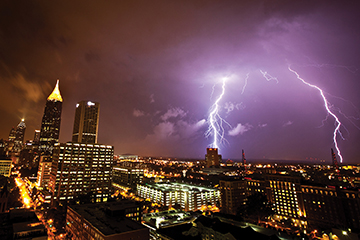Severe Weather Demands Early Planning

Image courtesy of Wired
Georgia recently had its first snow flurries of the season and managed to avoid another Snowpocalypse. But are you ready for the next bout of weather?
Feb. 1–5 is Georgia’s Severe Weather Awareness Week, when there will be an education focus on high winds, hail, and excessive precipitation.
In a climate that experiences weather of all varieties, it’s important to prepare for how these events could affect you and your safety. Right now, El Niño is greatly influencing the weather across the U.S. The National Oceanic and Atmospheric Administration (NOAA) predicts an increase in precipitation, combined with below-average temperatures, across the southern tier of the U.S. from January to March.
“Active El Niño winters and springs often support severe weather outbreaks across the southeastern U.S.,” said William Smith, director of the Office of Emergency Preparedness. “At a minimum, we should expect an active weather pattern to continue through this spring.”
The Office of Emergency Preparedness offers a few general tips to help you be ready for severe weather emergencies:
- Sign up to receive emergency alerts through the Georgia Tech Emergency Notification System (GTENS). You can register your cellphone number at www.passport.gatech.edu. Emails are received by default, but you should ensure you have also opted in to both voice calls and text alerts.
- Monitor weather conditions when the possibility of threatening storms emerges. Follow Emergency Preparedness on Facebook (www.facebook.com/GTEmergency) and Twitter (www.twitter.com/GTPDalerts) for updates on weather threats.
- Know where you will shelter during a tornado warning, both at home and at work. Seek shelter indoors and away from windows on the lowest level possible, preferably a basement. Look for shelter signs in buildings around campus to seek protection during a tornado.